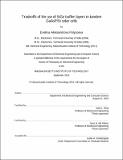| dc.contributor.advisor | Judy L. Hoyt and Jesús A. del Alamo. | en_US |
| dc.contributor.author | Polyzoeva, Evelina Aleksandrova | en_US |
| dc.contributor.other | Massachusetts Institute of Technology. Department of Electrical Engineering and Computer Science. | en_US |
| dc.date.accessioned | 2017-03-10T14:19:58Z | |
| dc.date.available | 2017-03-10T14:19:58Z | |
| dc.date.copyright | 2016 | en_US |
| dc.date.issued | 2016 | en_US |
| dc.identifier.uri | http://hdl.handle.net/1721.1/107289 | |
| dc.description | Thesis: Ph. D., Massachusetts Institute of Technology, Department of Electrical Engineering and Computer Science, 2016. | en_US |
| dc.description | This electronic version was submitted by the student author. The certified thesis is available in the Institute Archives and Special Collections. | en_US |
| dc.description | Cataloged from student-submitted PDF version of thesis. | en_US |
| dc.description | Includes bibliographical references (pages 101-103). | en_US |
| dc.description.abstract | III-V multi-junction solar cells currently have the highest reported theoretical and experimental energy conversion efficiency but their cost, mainly attributed to the use of expensive substrates, limits their widespread use for terrestrial applications. Successful integration of III--V's on a Si substrate to enable a III-V/Si tandem cell can lower the cost of energy by combining the high-efficiency of the III--V materials with the low-cost and abundance of the Si substrate. A maximum theoretical efficiency of 44.8% from a tandem cell on Si can be achieved by using a GaAsP (Eg=1.7 eV) as the top cell. Out of several possible integration routes, the use of a linearly graded SiGe buffer as interfacial layer between the two cells potentially yields the highest quality for the epitaxial GaAsP layer, an essential requirement for realization of high-efficiency solar cells. In this thesis, the impact of the SiGe buffer layer on the optical and electrical characteristics of the bottom Si cell of a GaAsP/Si tandem solar cell was assessed via experimental work. The growth of a SiGe buffer layer was shown to increase the threading dislocation density and as a result the leakage current of the bottom Si cell by about 10x. In addition, the low-bandgap SiGe absorbs more than 80% of the light that is intended for the Si sub-cell, reducing the short-circuit current of the Si cell from 33 mA/cm² to only 6 mA/cm². By using a step-cell design, in which the SiGe was partially etched to allow more light to reach the bottom cell, the current was increased to 20 mA/cm². To quantify the merits of the studied approach as well as evaluate other approaches, we have carried out a theoretical study of absorbed irradiance in a Si single-junction cell, a bonded GaAsP/Si tandem cell, a GaAsP/SiGe/Si tandem cell as well as the step-cell design. The GaAsP/Si bonded tandem cell showed 24% relative improvement in light absorption over a single-junction Si cell. The addition of a SiGe graded buffer was shown to reduce the total absorption by 25%, bringing the efficiency of GaAsP/SiGe/Si tandem cell under that of the Si single-junction cell. The step-cell design, even though successful in increasing light absorption, was not found effective in achieving a higher absorbed power density than that of the Si cell. These results suggest that any future work on integrating GaAsP cells on Si towards a high-performance tandem cell should be focused on using a higher-bandgap material as a graded buffer or using a wafer bonding technique. | en_US |
| dc.description.statementofresponsibility | by Evelina Aleksandrova Polyzoeva. | en_US |
| dc.format.extent | 103 pages | en_US |
| dc.language.iso | eng | en_US |
| dc.publisher | Massachusetts Institute of Technology | en_US |
| dc.rights | MIT theses are protected by copyright. They may be viewed, downloaded, or printed from this source but further reproduction or distribution in any format is prohibited without written permission. | en_US |
| dc.rights.uri | http://dspace.mit.edu/handle/1721.1/7582 | en_US |
| dc.subject | Electrical Engineering and Computer Science. | en_US |
| dc.title | Tradeoffs of the use of SiGe buffer layers in tandem GaAsP/Si solar cells | en_US |
| dc.type | Thesis | en_US |
| dc.description.degree | Ph. D. | en_US |
| dc.contributor.department | Massachusetts Institute of Technology. Department of Electrical Engineering and Computer Science | |
| dc.identifier.oclc | 973330115 | en_US |
